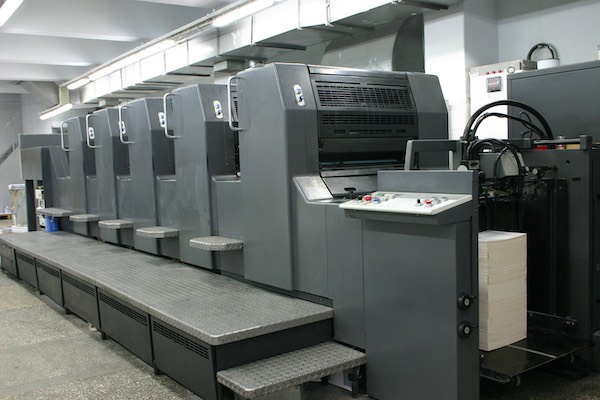Printers who had hoped to see their industry rebound in 2011 have had to put their optimism on hold—again. Data from the continuously updated “Industry Snapshot” at WhatTheyThink’s Economics and Research Center tell a mostly disappointing tale of smaller shipments, less capacity utilization, and thinner staffing compared with a year ago.
But, no matter what is happening to print industry metrics in general, it seems clear that at least one of them is trending up in a natural and positive response to weakness in other respects. What’s more, the uptick represents a strategy that many print firms should be able to use to their advantage as the industry continues to rehabilitate itself in 2012.
New Direction Partners (NDP), an Investment banking and financial advisory firm to the printing industry, keeps close tabs on mergers and acquisitions (M&As) within the industry. Peter Schaefer, partner, says that NDP tracked 74 announced M&A transactions last year—12 more than in 2010, and 18 more than in 2009. The increase comes in part, he says, from printers’ acceptance of the fact that “growth by acquisition is easier than organic growth”—and that this business reality isn’t likely to change soon.
Another NDP partner, Jim Russell, says that the reality is hitting home for print company owners who have put off looking for a deal until industry conditions improved. His colleague, NDP partner Tom Williams, observes that like homeowners whose residences have permanently declined in value, these printers finally are admitting that status quo ante isn’t coming back and that the time to act is now.
Don’t Consider the Alternative
This is why the keynote of NDP’s advice to its clients is that in view of the volatile condition of the print market, the decision to seek refuge in an M&A transaction may be the smartest call that the owner of a printing company can make. For owners of troubled firms, says Schaefer, selling to someone else in a mutually beneficial deal certainly is more desirable than shutting the doors and liquidating what remains of the business. Williams, however, cautions that combining two troubled firms is not a solution. “You can’t put two sick patients in the same bed,” he says.
Selling isn’t just a strategy for owners of companies whose best days in business are behind them. It might also dawn upon owners of stable, profitable firms, notes Russell, that “they just don’t like the headache of running a printing company.” Selling can make it possible for them to stay active in the business in a role other than that of the harried owner-operator.
Most of the M&A transactions managed by NDP fall into two categories: either the traditional sale with a purchase price based on a multiple of EBITDA (earnings before interest, taxes, depreciation, and amortization); or the tuck-in, an absorption in which payment to the seller primarily is an earn-out based on sales retained by the acquiring company and often includes the purchase of certain other assets by the acquirer. The EBITDA-based transaction is usually reserved for healthy, profitable companies, leaving the tuck-in as a practical alternative for companies whose fundamentals aren’t as robust.
As an architect of print industry M&As in today’s market conditions, NDP completes more tuck-ins than EBITDA-based sales. Williams says that last December, for example, the firm closed twice as many tuck-ins (four) as traditional deals (two) in which the acquired businesses stayed in operation as going concerns. The partners expect tuck-ins to remain the norm as the industry’s consolidation continues.
Solid Multiples for Sound Firms
Although EBITDA-based M&As take place less frequently than tuck-ins, they remain do-able—especially by owners who seek professional advisement in putting these complex deals together. “The larger, profitable printing firms can still be sold in the traditional manner, and there are buyers for them,” Russell says, adding that size isn’t always a prerequisite. As long as a company is well-run and profitable, he says, “it can still be sold at a good multiple in a traditional EBITDA transaction.”
EBITDA multiples of 4 to 51/2 should be achievable for sound, well-managed printing companies in 2012, according to Schaefer, who sees a greater willingness on the part of buyers to deal at the high end of that range.
In an EBITDA-based acquisition, the buyer may need to borrow cash to fund the transaction. Raising capital for M&As continues be a tough challenge for most printers, notes Williams, in the tight credit conditions that prevail in their industry. Acquisition-minded small firms, in particular, will find it hard to persuade banks to lend them money against the value of their assets.
But the good news, Williams says, is that raising up-front cash may not be necessary. In the first place, few print industry M&As take place on a scale that requires the borrowing of large amounts of capital. When they do, the acquirers, thanks to their large size, usually are able to secure the money they need.
More commonly, print company acquisitions are structured as tuck-ins, in which little or no cash is given to the seller at closing. That payment comes from revenue from future sales, often with the seller still in the picture as an executive of the merged business.
In NDP’s experience, tuck-ins tend to be transactions valued at $5 million or less. For companies of this size, the concept of an EBITDA-based sale may be moot anyway, since they often have little or no EBITDA. Instead, their purchase price will be based upon their value of their assets.
What Makes Print Businesses Buy-worthy?
No matter which of the two models is used, Russell, Schaefer, and Williams agree about the characteristics that can make a firm of any size attractive as an acquisition target. Printing companies wishing to buy other printing companies, they say, are drawn to candidates that:
• have a specialty that differentiates them from the competition
• can show a trend of steady profitability over several years
• invest in up-to-date equipment and technology
• keep customer churn to a minimum
• aren’t overdependent for revenue on one account or a small number of accounts
• don’t carry unfunded pension liabilities that could hurt future financial performance
• are geographically convenient to the acquiring company and its customers
Schaefer says that NDP expects the pace of print industry M&As to accelerate as organic growth remains hard for many printing companies to achieve. And this year, politics might give the trend a timely boost as printers—like business owners in every other industry—wonder what the November elections will hold in store for taxation and the economy as a whole.
At least two firms that have approached NDP for advice have expressed special interest in closing their deals before 2012 is out, Schaefer says.








